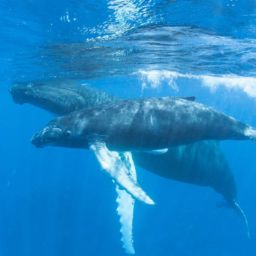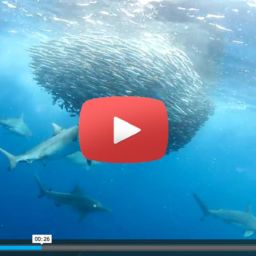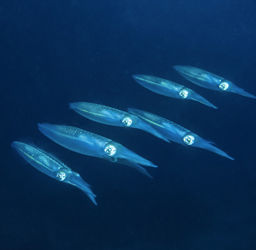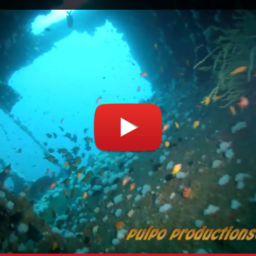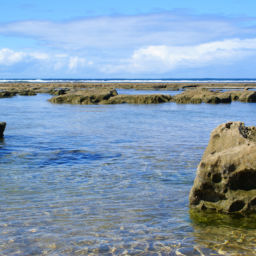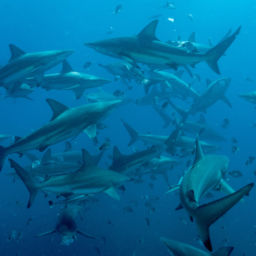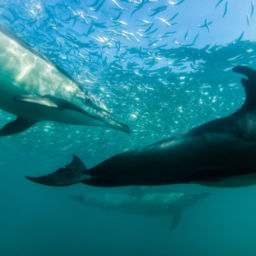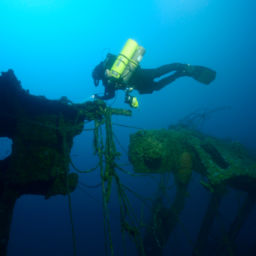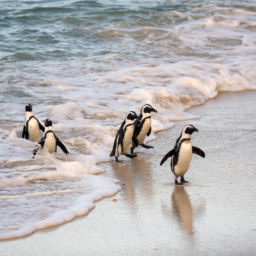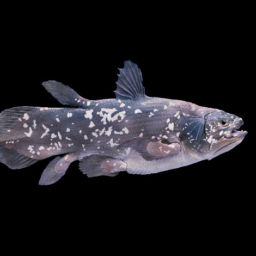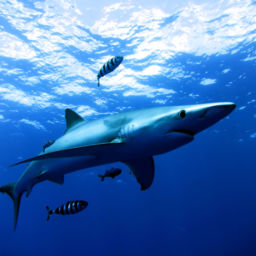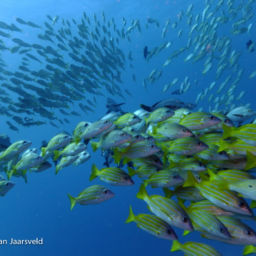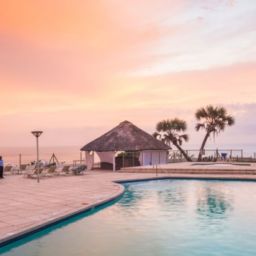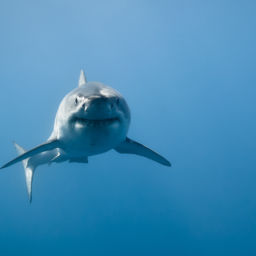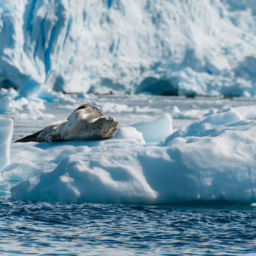Don’t let winter stop you from getting in the water. There are some incredible, seasonal marine-life highlights around the world this month, so pack your bags and explore our top December dive destinations.
Belize’s waters are teeming with thousands of spawning Nassau groupers; French Polynesia’s hammerhead shark season is underway; and you can dive with millions of sardines in the Philippines.
December isn’t just about marine life though. Truk Lagoon in Micronesia is idyllic as the dry season begins, while Bonaire offers a wealth of easy-going Caribbean shore dives for all experience levels.
Belize
If you go diving in Belize around the full moons of December to March, you’re in for a very special marine life encounter. The critically endangered Nassau grouper has enormous spawning aggregations on Belize’s outer reef shelves during the days surrounding these full moons. One of the largest fish on coral reefs, they grow to over 3 feet (1 m) long and can weigh up to 55 pounds (25 kg).
Gathering and circling in groups of up to 1,000 individuals, the groupers return to the same sites each year, making their spawning activity relatively easy to predict.
Visit Turneffe Atoll reef and you can also enjoy some of Belize’s best biodiversity while you drift over this special marine reserve. Whichever dive sites you choose at Turneffe Atoll, you’ll likely find schools of pelagic fish, colorful reef life, sharks and three different sea turtle species.
Finally, Hol Chan Marine Reserve is one of the best spots for Belize night diving and for exploring diverse landscapes including coral reefs, seagrass beds and mangrove forests.
The aptly named Shark Ray Alley is perfect for diving with easy-going nurse sharks and stingrays.
Truk (Chuuk) Lagoon, Micronesia
It’s the beginning of Micronesia’s dry season in December, making it a great time to visit this idyllic wreck diving mecca and immerse yourself in living history.
Once a World War II Japanese naval base, Truk (Chuuk) Lagoon has more than 48 wrecks and numerous historical artifacts to discover.
Encrusted with corals, the wrecks are colorful artificial reefs, ideal for photography. Groupers, barracuda and abundant reef fish surround the structures. It’s not uncommon to see gray reef sharks, sea turtles, stingrays or eagle rays while you’re diving here as well.
Every dive-experience level is catered for thanks to numerous wrecks within recreational diving limits, some reaching as shallow as 16 feet (5 m) depth. There are also plenty of wrecks between 130 and 197 feet (40 to 60 m) for tec divers.
The popular 436-foot-long (133 m) Fujikawa Maru, an old cargo and passenger ship, is covered in marine life and has two aircraft, an engine room and tool room to explore.
To experience some of the bet soft coral growth in the lagoon, dive the Sankisan Maru. This fascinating wreck has holds filled with machine guns, aircraft engines, propellers and more.
And, if you want to go deep diving, add the San Francisco Maru to your list. This wreck, which lies at 206 feet (63 m) is a diver favorite thanks to its collection of mines, bombs, tanks and trucks.
French Polynesia
French Polynesia is one of those dive destinations that is stunning any time of year. Thanks to an array of seasonal marine-life changes, there is always something special here.
December marks the start of hammerhead season, when these sharks gather in large numbers to feed on groups of mating eagle rays.
Washed by strong currents, Rangiroa and Fakarava’s walls and channels can be challenging, but the rewards are worth it. You’ll likely see ‘walls’ of hundreds of gray reef sharks, mantas, and bottlenose dolphins hanging out at channel entrances.
Fakarava Atoll, a UNESCO Biosphere Reserve, is so special that some French Polynesia liveaboards spend their entire safari there.
As well as hundreds of reef sharks, Fakarava has manta-cleaning stations and shallower reef dives with healthy hard corals. Kauehi Island’s Outer Wall is one of the best walls for huge hard corals and sponges. This island also has an underwater cliff face plunging dramatically to over 4,900 feet (1,500 m).
Philippines: Visayas
Although it’s possible to dive the Visayas all year, October to March is the best time to experience all that makes this Philippines scuba diving destination so popular.
With over 7,000 islands and dive areas to choose from, it’s fair to say the Visayas can meet almost all diver preferences.
Moalboal, the Philippines premier sardine run destination, has swirling baitballs made up of millions of sardines (November to April). It’s comparable to South Africa for its mesmerizing baitball formations, plus exciting pelagic action.
Apo Island’s steep, coral-covered walls and black volcanic sands make it a sought-after choice for macro divers, while Bohol’s Turtle Paradise offers almost guaranteed sea turtle encounters.
And let’s not forget Monad Shoal at Malapascua. As the only place where you can reliably dive with thresher sharks, this destination has rightly earned its place as one of the world’s best shark dives.
Bonaire
Just north of Venezuela, Bonaire is the shore-diving capital of the world, with more than 60 shore dives offering accessible coral reefs, seagrass beds, wrecks and mangroves.
This Caribbean biodiversity hotspot is also outside of the hurricane zone and well-protected from currents, creating easy, predictable diving for all experience levels.
Whether you want to enjoy the 470 or so fish species found here or spot bucket-list macro life, Bonaire won’t disappoint. Seahorses, frogfish, nudibranchs and other critters flit among among the corals, while eagle rays, dolphins and sea turtles often pass by.
The 236-foot (72 m) Hilma Hooker wreck is a popular shore or boat dive offering plenty of marine life.
Another great shore dive, the 1000 Steps offers picturesque steps down to the beach, where you can dive among beautiful corals, barracudas, turtles and reef fish.
Finally, don’t miss Salt Pier for an exceptional volume of fish sheltering under the pier, as well as coral-encrusted pillars bathed in light from above.
Divers and writers at LiveAboard.com contributed this article.







